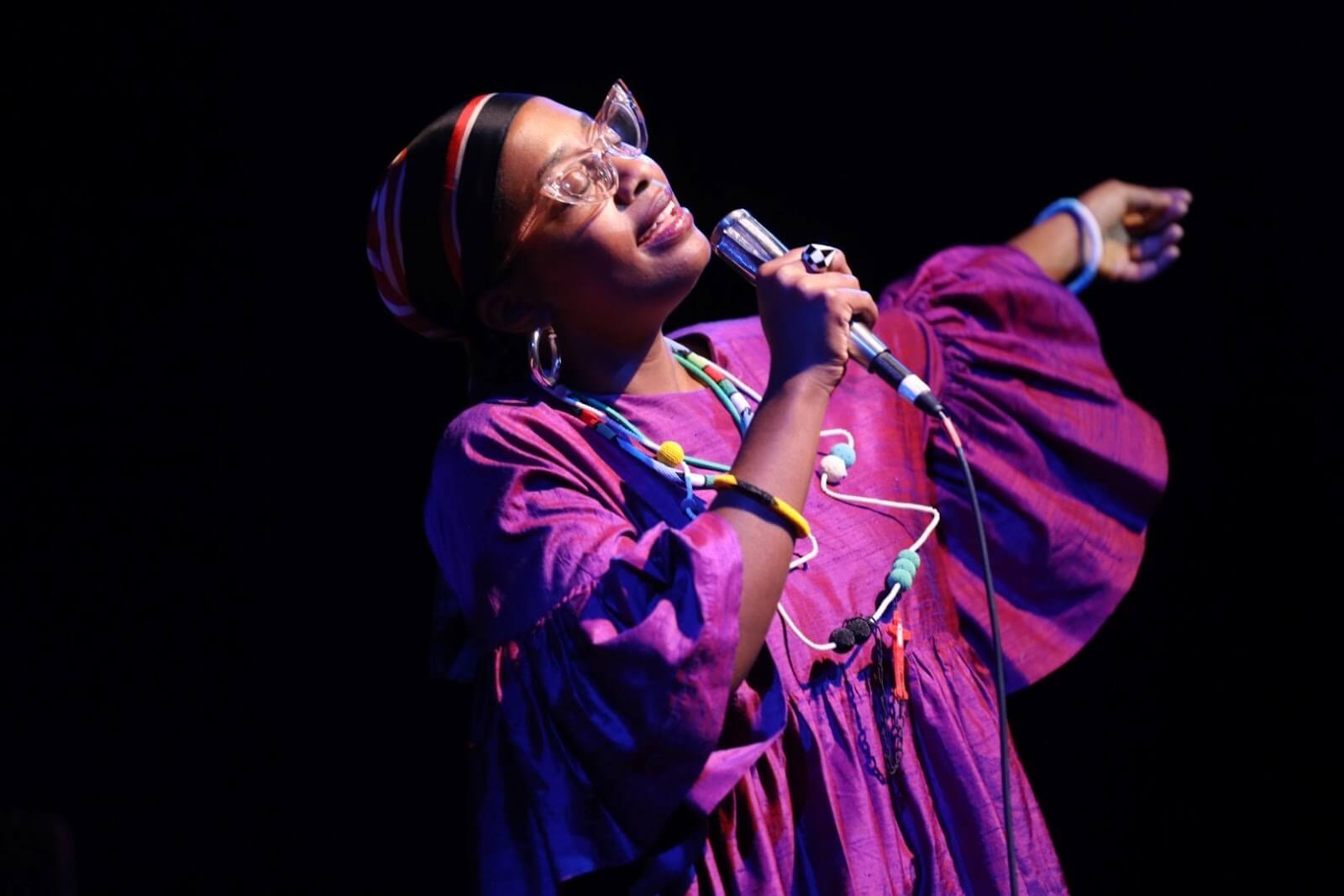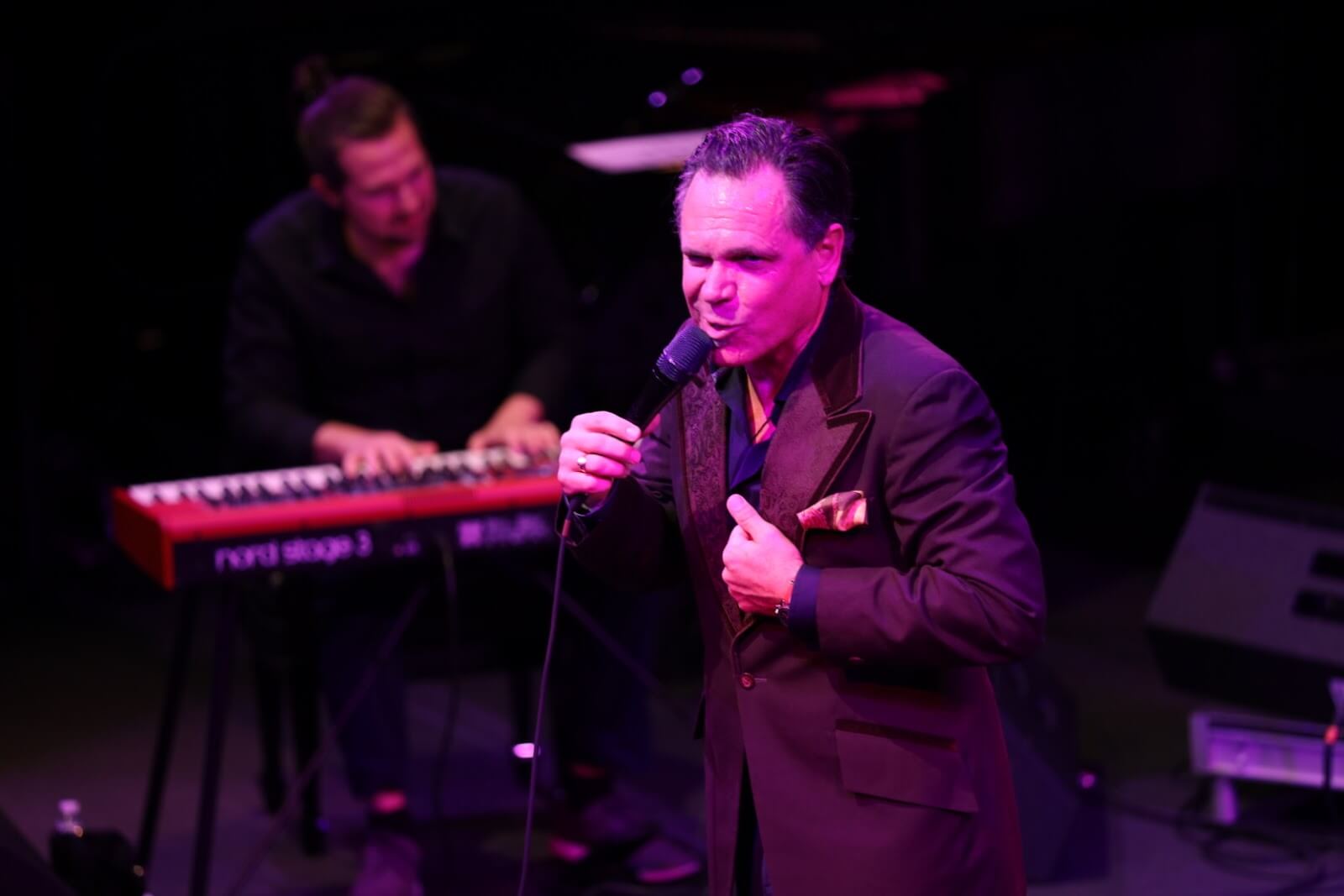What if jazz is the original fusion music? What if it was always fusion music, from the very beginning, long before the Tony Williams Lifetime and Electric Miles and Weather Report?
That is all the truth, so obvious that it was overlooked before Williams and Miles brought the startling, creative rock of the late ‘60s into jazz. But jazz never started as a pure, objective form. It developed out of a mix of ingredients: blues, hymns, work songs, dance tunes, bits and pieces from France and Spain via the Caribbean, all stewing together in New Orleans, a port city that brought together people from all over the world and from every corner of life. Jazz is a stew, jazz is life. How could it not be a fusion?
October’s BRIC JazzFest, in the BRIC building that hides among the soulless towers of Fort Greene, went in heavy on the fusion side. And as a true fusion music, there wasn’t much rock. Nothing wrong with rock, but there are so many other musics out there to bring into jazz, especially in a time when the bulk of the recorded legacy of music making is just a screen and an online account away. The flavors at two nights of the festival were spicy with soul, funk, music theater, even hip hop and Gnawa music—what the publicity materials called Modern Black Music. Hell yeah, jazz is life.
The hip hop and Gnawa were on the Gallery stage, courtesy of a sinuous set from Stas Thee Boss, singing and flowing about the knots of relationships and racism, and Samir Langus, leading a nonet in a crowd-pleasing hour of bluesy Gnawa rock. Those musicians, and Dominican guitarist Yasser Tejeda, were probably the farthest from the central roots of jazz, which essentially meant they weren’t far at all, and their music fit into the festival program with such naturalness that, other than the quality and fun, their presence was unremarkable.
That, happily, seems to be the state of jazz for audiences these days. There are occasional pronouncements about what is and isn’t jazz in the far corners of critical discourse, but their lack of effect shows how meaningless they are. The sold-out crowds swung easily from the incisive modern acoustic jazz idioms of Adam O’Farrill’s Stranger Days, the Sean Jones Quartet, and bassist Adi Myerson’s sextet (with guest vocalists), and the prog-rock, funk and neo-soul of Thana Alexa and her Ona band, vibraphonist Sasha Berliner and her group, and Superblue, Kurt Elling’s new project with Charlie Hunter.
The festival unfortunately scheduled Berliner’s set almost directly opposite Elling’s, so something had to give, and that was extended attention to Berliner’s ultra-stylish, assured group, which featured alto saxophonist Jaleel Shaw. The resonant sound of Berliner’s vibes, the hip beats and muscular harmonies, the way her soloing dug at the music, were all so compelling that the crowd literally gravitated en masse to the Gallery space. Meanwhile, in the Ballroom, Elling and Hunter were getting into getting down.
Superblue is a fascinating record. The surface is glossy, wise-ass funk, but Elling is a deep artist, who has set the poetry of Theodor Roethke and Rilke to music, and done astonishing vocalese on the tunes and playing of John Coltrane, Dexter Gordon, Wayne Shorter, and Freddie Hubbard. With Hunter in the engine room, Elling sings the poetry of Chase Twichell over more Shorter, delivers a reading of Tom Wait’s monologue, The Circus, and draws out a narrative from Dharma Bums, over Hunter’s rave-up, that ends with the quote from Elwood Blues that sets up the denouement (such as it is) of The Blues Brothers. The blistering live set traded the subtleties for energy and pure fun, and some intense playing from substitute drummer Nate Smith, and everybody on stage seemed to be having even more fun than everyone in the ballroom—pretty much all of whom were dancing—which didn’t seem possible. Elliing has done some middling songbook stuff recently, but this was him at his best, aiming for the head and the hips at the same time.
And then there was the theatrics: the Sun Ra Arkestra, led my Marshall Allen, Roy Nathanson’s and Nick Hakim’s new, quasi version of the Jazz Passengers, and in a subtle, important, and beautiful way, Cécile McLorin Salvant, accompanied by pianist Sullivan Fortner.
Nathanson and Hakim, and the Arkestra, went back-to-back in the Ballroom on Friday night, a great pairing. Both groups make theatrical music. That’s been established with the Arkestra for decades—they don’t just play originals like “Angels and Demons at Play,” and standards like “Stranger in Paradise,” they put Sun Ra’s Afrofuturist world into motion on stage, with the abstract space suits and general atmosphere of a better world, even if only for 45 minutes at a time. Allen may need some help getting on stage, but his playing and direction are still as powerful and sharp as anyone’s, and the Arkestra experience seems to be eternally one of joy and companionship. If musicians can provide models for how to live a good life both as an individual and in a community, then the Arkestra is not just a great big band, but a great social organization. Rhetorical, that, because it is and always has been.
Nathanson is part of that ethic too, playing impromptu concerts from his porch during the pandemic. He and Hakim wrapped up their collaboration, Small Things, during the worst of 2020, and with esteemed colleagues like trombonist and vocalist Curtis Fowlkes, that’s what they brought to stage. They hit an amazing balance, Hakim’s soulful, heartfelt slow jams, Nathanson’s irreverent approach to everything musical and American. Nathanson is an idealist, and he still believes, so songs like “Cry Party” and “Things to Like and Not Like in America” threaded a narrow line between hope and despair, frustration and optimism. The crowd was shoulder-to-shoulder, and there was a homecoming feel, like the music was reporting dispatches on everything we had been through in 2020. Playing mostly straight-ahead, idiomatic jazz, this set went farther afield than anything else.

In a quiet way, Salvant did the same. She and Fortner are excellent partners, confident in each other, and they picked out tunes on the bandstand. The pianist was always right there, supporting the voice, and Salvant gave him plenty of space for solos that tickled the edge of wildness. She, meanwhile, was uncanny and haunting, an amazing synthesis of Nancy Wilson and Judy Garland, great jazz singer and theater nerd. That meant songs from Gypsy, in a “Bernadette Peters” style, as she pointed out, and also “The World is Mean” from The Threepenny Opera, with a delivery that out-Brechted Lotte Lenya, and the fusion with the pop world of “Dancing With Your Ghost.” Then there was an enthralling “Lush Life”—with proper pronunciation of “distingué”—that captured what Salvant is like live. Her albums are excellent, but live she has a transparency and intimacy that are the sound of her falling in and out of love with you, the listener, and even in the crowd, she sings to you like there’s no one else around. Nothing is more dramatic.
Author
-

George Grella wrote the book on Miles Davis’ Bitches Brew. He write other stuff too. killyridols.substack.com/
View all posts
George Grella wrote the book on Miles Davis’ Bitches Brew. He write other stuff too. killyridols.substack.com/










